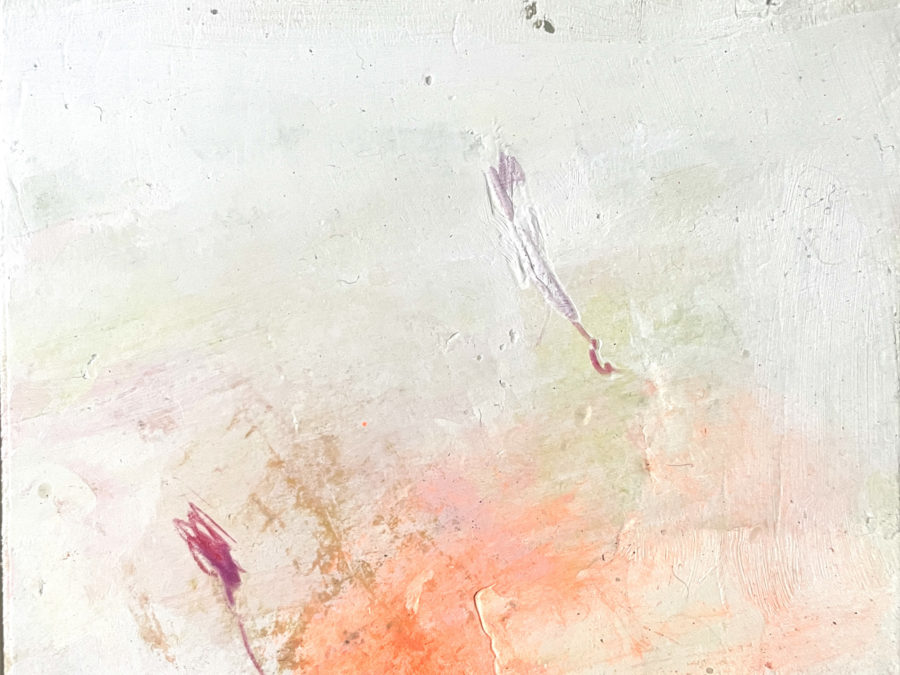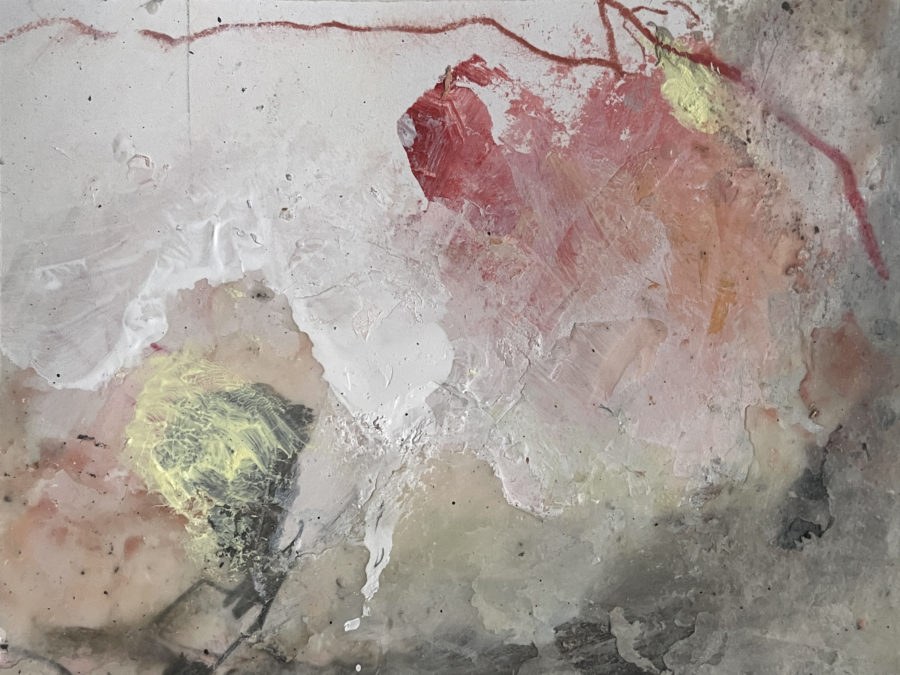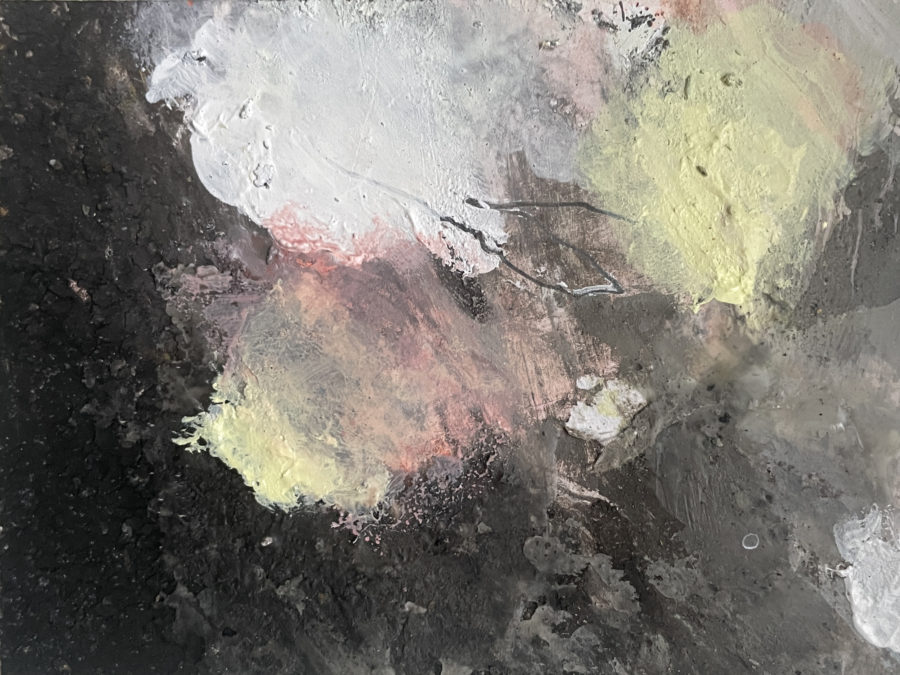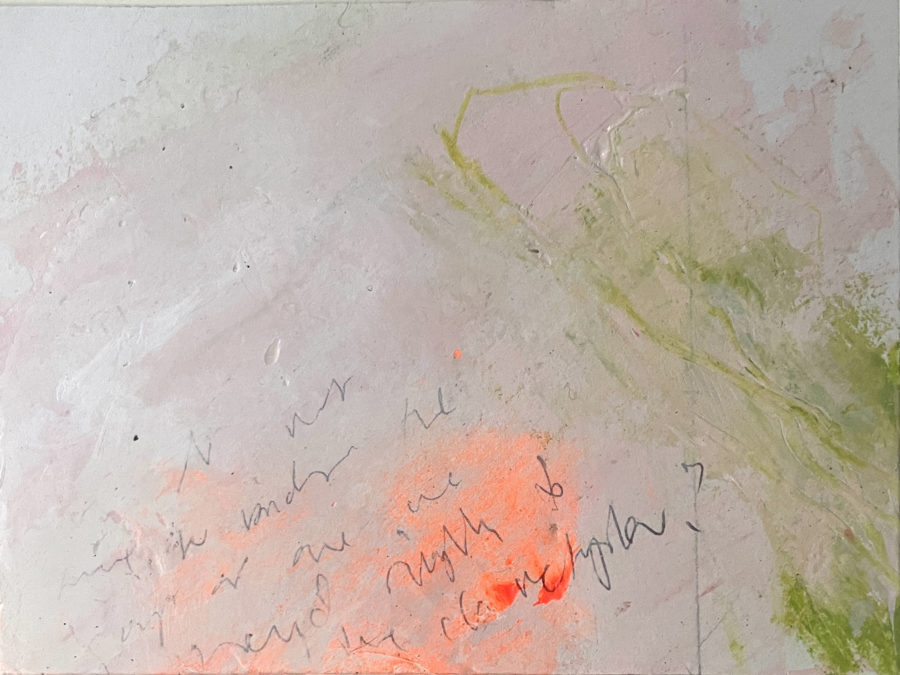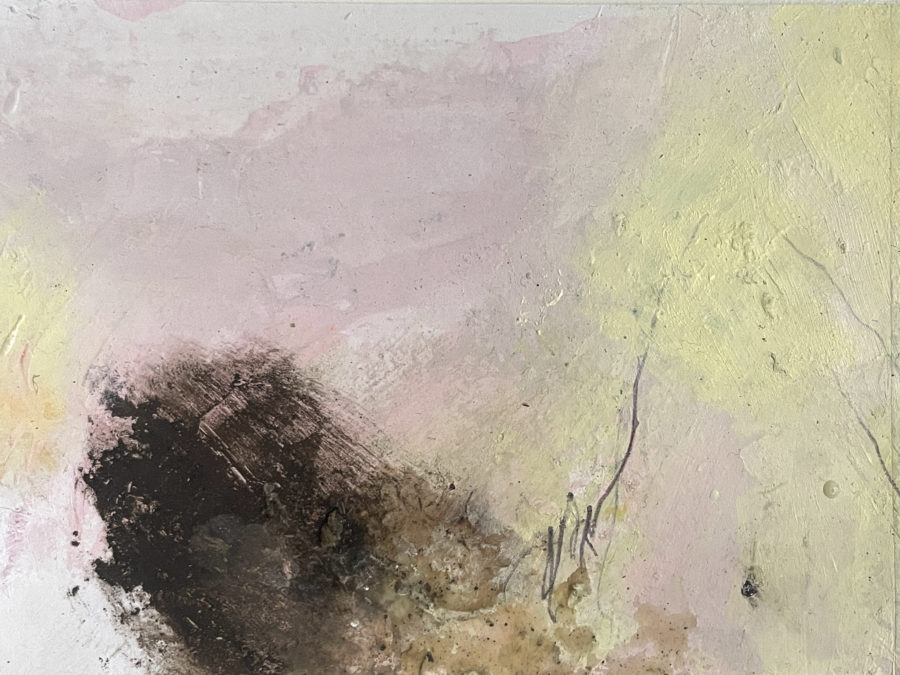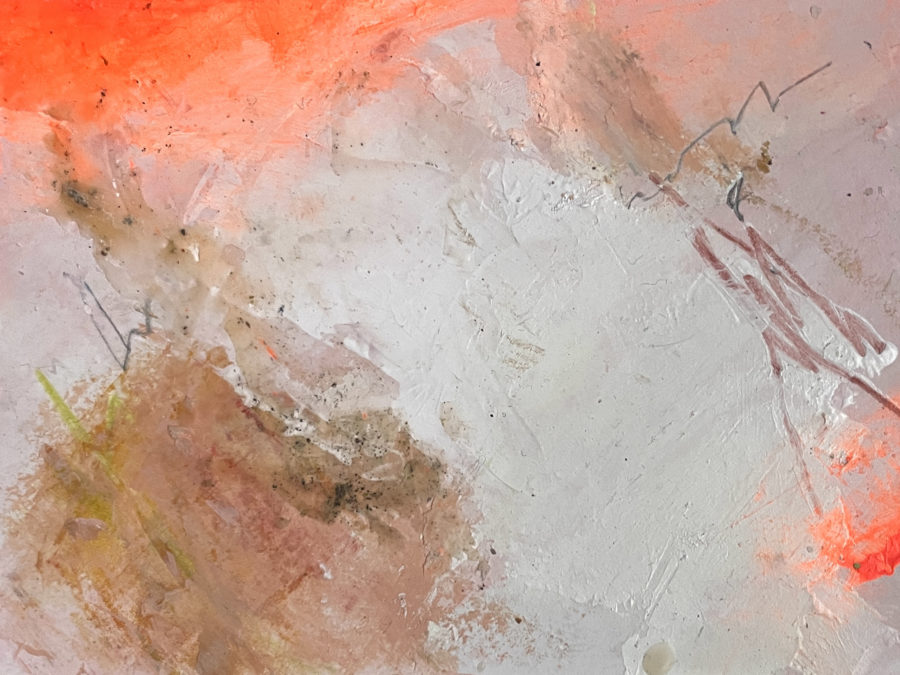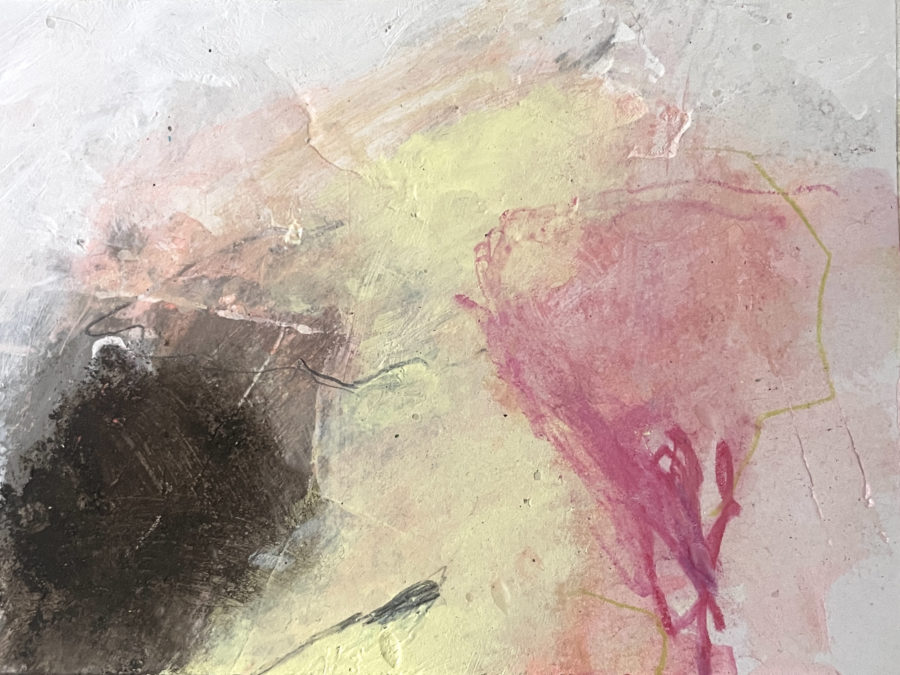és com l’espectre d’una flama morta
es como el espectro de una llama muerta
like the ghost of a dead flame
‘D’un xiprer’, Josep López-Picó
This closing line turns my mind around, a little. Something weird and strange is going on, and this feeling forms the start of this small series of works, along with the Ortega y Gasset essay in which I first encountered López-Picó’s verse.
There’s such a muddle of abstractions and contradictions. Flame has a violent ephemerality, the hint of death where trees are concerned. Isn’t the image of a ‘dead flame’ already rather ghostly, and to speak of spectrality a little overkill? I cannot say I’ve made my mind up about this last line, then, but I think it doesn’t particularly matter. It might be the mind-turning that matters.
The poem first came to me via my long-term collaborative project with poet Joan Fleming, extracted from Graham Harman’s writing on José Ortega y Gasset. Both López-Picó’s poem and Ortega y Gasset’s essay resonated at an intimate frequency, recalling works I’ve read, ideas that have motivated recent exhibitions, and a certain feeling I get from working with my materials.
First of all, it’s worth pointing out that there was something quite simple going on when I was first sent Ortega y Gasset’s ‘An Essay in Esthetics by Way of a Preface’: a pleasure engaging with Spanish writing. For Ortega y Gasset’s is one of those names that floats in the ether and despite being a writer that played a significant role in the intellectual circles of his time, he is barely known outside the country and little read within it. I felt grateful for a way into a work I’d long heard of but never truly read and ever more rooted as an artist to the country in which I live.
But I also found that Ortega y Gasset raises certain ideas and concerns that have been close to me for some time. Firstly, there’s a strong hint of William James’s notion that to each grammatical construct, a unique emotion corresponds. It was an thought I used to title my first exhibition—’a feeling of if’—and one that Ortega y Gasset takes out of the strictly grammatical sphere:
“Every objective image, on entering or leaving our consciousness, produces a subjective reaction just as a bird that lights on or leaves a branch starts it trembling…”
A feeling of if? A feeling ‘cypress ghost of a dead flame’?
What trembles?
Ortega y Gasset is using López-Picó’s verse to illustrate two ideas about metaphors and their importance: firstly, he writes, a metaphor acts not only to call forth those resemblances that exist between images, but also their dissimilarities, and in equal measure. So yes, the flame and the cypress may share a rough visual similarity, certain links in a chain of life and death, but contradictions and complexities are as equally present. Ortega y Gasset’s goes on to claim that the metaphor becomes something like a verb, ‘erupting’ within us. It is the acting-in-the-mind of this duality, this similarity-dissimilarity contradiction.
But, more importantly, Ortega y Gasset argues, what we experience with this is the very elusiveness of the world itself, a world we can never really fully access. Ortega y Gasset’s phenomenology wriggles out. Because we often meet the world only in its usefulness to us, when there is so much inaccessible, also. In the world. In ourselves.
The brick found in the underbrush—the same brick I used in my last exhibition, ‘We, the Body,’ for instance—looks to the painter like a surface upon which paint, with traces to respond to, but the snail who left those marks, what did it find there, and for how long? Who knows, perhaps nothing more than an object to traverse, a path to make, or was it shelter? It takes time to see, or speculate, beyond the immediate usefulness, or uselessness, of an object, and to try and inscribe that in the final work.
And so for Ortega y Gasset, the metaphor might embody something like a reminder that the world is multiple and various, inaccessible to a large degree, something like an opportunity to feel this contradiction, to occupy that space. To decentre the self and the anthropocentric worldview.
Maybe this is taking it all too far, but there’s something in this particular metaphor, “cypress…the ghost of a dead flame”, that reminded me of my previous work with found-objects as well as that feeling I first had upon seeing concrete on a wall-mounted canvas. Something uncanny, something that asked me to see differently.
With Xiprer I’ve taken to using fluorescent pink and green alongside the soil. To bringing out a certain luminescence by burning lichen in wax. To using concrete alongside layers of pastel washes, applied over and over, without a full knowledge of what the resultant mark with dry to resemble. I always find that the gap between gesture and result is a place for uncertainty, for the frustratingly and often joyfully unexpected to emerge, and this is no more so than working with concrete, which dries in unforeseen ways, and washes on canvas, which often lose colour, or fast fade. And yes, there’s some rough visual flaminess, a cypress-form, to some of the marks too, but hopefully something beautifully uncanny in the mix, also.
Terry Craven,
December 2022.
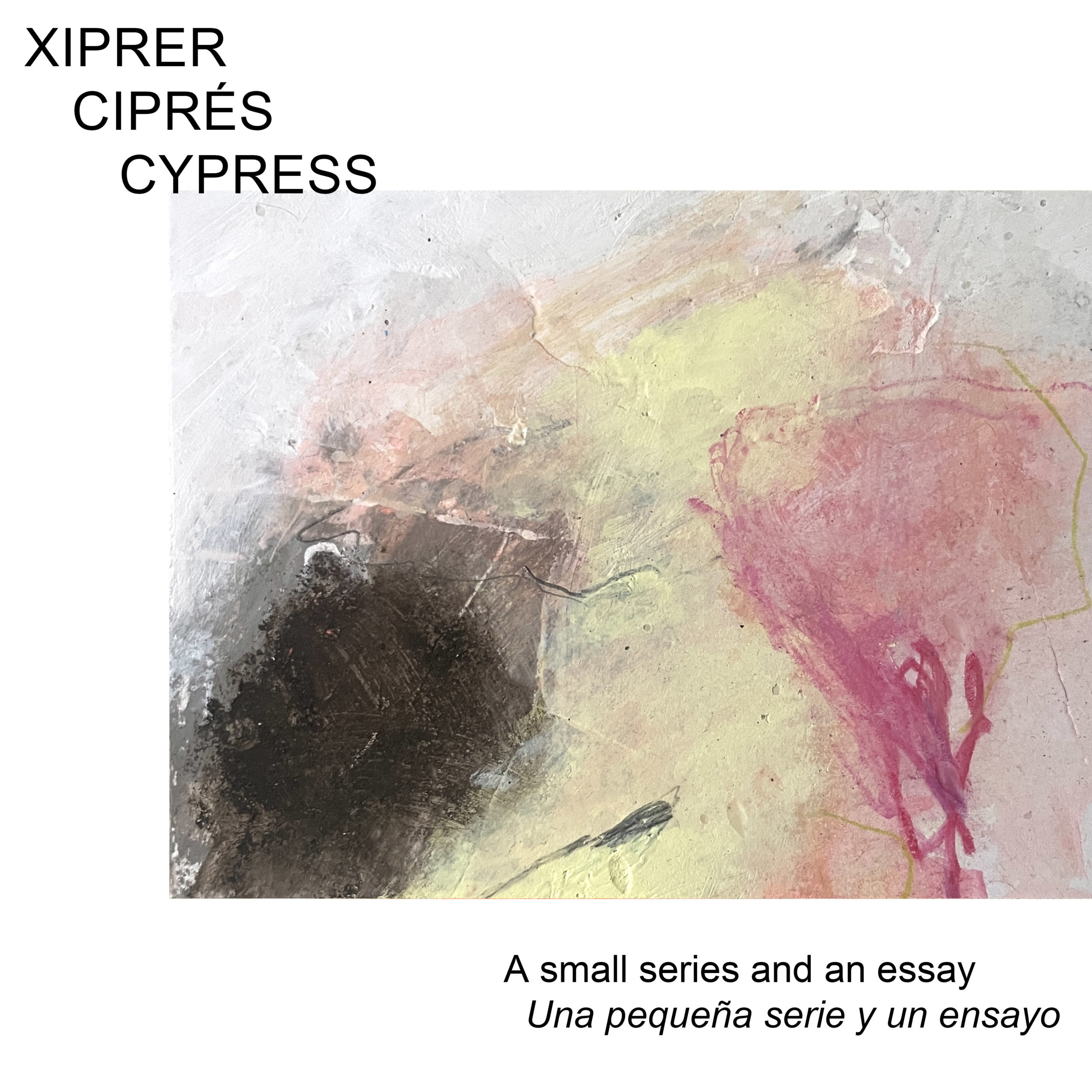
Este último verso me genera un vuelco en el pensamiento. Algo raro y extraño está sucediendo, y esta sensación estimula el comienzo de esta pequeña serie de obras, junto con el ensayo de Ortega y Gasset en el que me encontré por primera vez con el verso de López-Picó.
Hay tal embrollo de abstracciones y contradicciones… La llama tiene un violento carácter efímero, una insinuación de muerte que involucra árboles. La imagen de una “llama muerta”, ¿no es ya bastante fantasmagórica?, y hablar de espectralidad ¿quizá un poco exagerado?. No puedo decir que esté seguro sobre esta última línea, pero creo que no importa demasiado. Quizá lo que importe sea el vuelco mental que me produce.
El poema me llegó por primera vez a través de mi proyecto en colaboración con la poeta Joan Fleming, quien lo había extraído de un escrito de Graham Harman sobre José Ortega y Gasset. Resoné en una frecuencia íntima tanto con el poema de López-Picó como con el ensayo de Ortega y Gasset. Me recordaron obras que he leído, ideas que han motivado algunas de mis exposiciones recientes y cierta sensación que me produce trabajar con mis materiales.
En primer lugar, vale la pena señalar que, cuando me enviaron por primera vez la obra de Ortega y Gasset “Ensayo de estética a manera de prólogo”, me estaba ocurriendo algo muy sencillo: un placer al relacionarme con la escritura española. Porque Ortega y Gasset es uno de esos nombres que flotan en el éter y, sin embargo, para alguien que desempeñó un papel muy importante en los círculos intelectuales de su época, apenas se le conoce fuera del país y se le lee poco dentro de él. Me sentí agradecido por haber encontrado una manera de adentrarme en una obra sobre la que había oído hablar hace tiempo, pero que nunca había leído realmente, y estando cada vez más arraigado como artista al país en el que vivo.
Pero también descubrí que Ortega y Gasset plantea ciertas ideas e inquietudes que me acompañan desde hace tiempo. En primer lugar, hay una fuerte alusión a la noción de William James de que a cada construcción gramatical le corresponde una emoción única. Fue una idea que utilicé para nombrar mi primera exposición – A feeling of if – [Una sensación de si] y que Ortega y Gasset saca de la esfera estrictamente gramatical:
“Toda imagen objetiva, al entrar en nuestra conciencia o partir de ella, produce una reacción subjetiva —como el pájaro al posarse en una rama o abandonarla la hace temblar…”.
¿Un sentimiento de si? ¿Un sentimiento “ciprés fantasma de una llama muerta”?
¿Qué tiembla?
Ortega y Gasset utiliza el verso de López-Picó para ilustrar dos ideas sobre la metáfora y su importancia: en primer lugar, escribe, una metáfora actúa no sólo para evocar las semejanzas que existen entre imágenes, sino también sus desemejanzas, y en igual medida. Entonces sí, la llama y el ciprés pueden compartir cierta similitud visual, determinados eslabones del ciclo de vida y muerte, pero las contradicciones y complejidades están igualmente presentes. Ortega y Gasset afirma que la metáfora se convierte en algo parecido a un verbo, que “estalla” dentro de nosotros. Es el accionar con esta dualidad en mente, con esta contradicción similitud-disimilitud.
Pero, lo que es más importante, Ortega y Gasset sostiene que lo que experimentamos con ello es la propia elusividad del mundo, un mundo al que nunca podemos acceder plenamente. La fenomenología de Ortega y Gasset se escabulle. Porque a menudo solo nos encontramos con el mundo de manera instrumental, cuando también hay mucho que nos es inaccesible. En el mundo. En nosotros mismos.
El ladrillo encontrado en la maleza—el mismo ladrillo que utilicé en mi última exposición, Somos el cuerpo, por ejemplo—es para el pintor una superficie sobre la que pintar, con huellas a las que responder; pero el caracol que dejó esas marcas, ¿qué encontró allí?, y ¿durante cuánto tiempo?. Quién sabe, tal vez nada más que un objeto que recorrer, un camino que marcar, ¿o era un refugio? Lleva tiempo ver o especular más allá de la utilidad o inutilidad inmediata de un objeto, e intentar inscribir aquello en la obra final.
Y así, para Ortega y Gasset, la metáfora podría encarnar algo así como un recordatorio de que el mundo es múltiple y diverso, inaccesible en gran medida, una oportunidad para sentir esta contradicción, para ocupar ese espacio. Para descentrar el yo y la visión antropocéntrica del mundo.
Tal vez esté yendo demasiado lejos, pero hay algo en esta metáfora en particular, “ciprés… el fantasma de una llama muerta”, que me recordó mi trabajo anterior realizado con objetos encontrados, así como esa primera sensación que tuve al ver hormigón en un lienzo montado en la pared. Algo extraño, algo que me pedía ver de otra manera.
Con Xiprer he pasado a utilizar rosa y verde fluorescentes junto a la tierra, a resaltar cierta luminiscencia quemando líquenes en cera, a utilizar hormigón junto con capas de colores pastel, aplicadas una y otra vez, sin saber a qué se parecerá la marca resultante. Siempre encuentro que el espacio entre el gesto y el resultado es un lugar para la incertidumbre, para que surja lo frustrante y a menudo alegremente inesperado. Y lo mismo sucede al trabajar con hormigón, que se seca de maneras imprevistas, y con lavados sobre lienzo, que a menudo pierden color, o se desvanecen rápidamente. Y sí, también hay algo de una visualidad flamable, áspera, una forma de ciprés en algunas de las marcas. Pero es de esperar que también haya algo maravillosamente misterioso en la mezcla.
Terry Craven,
Diciembre 2022

